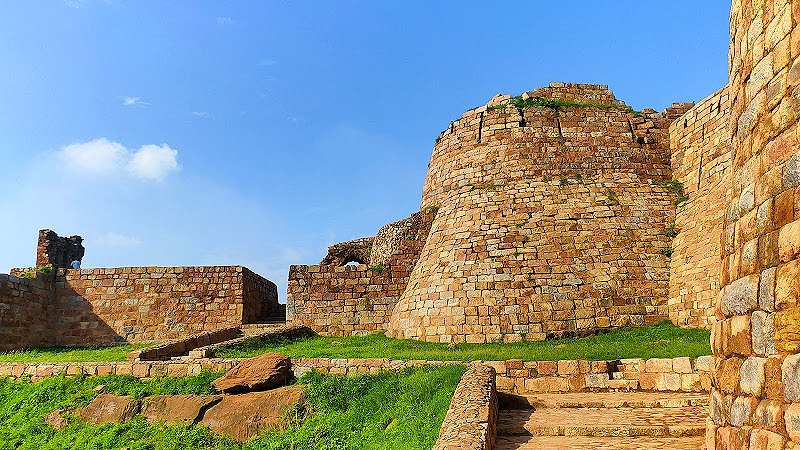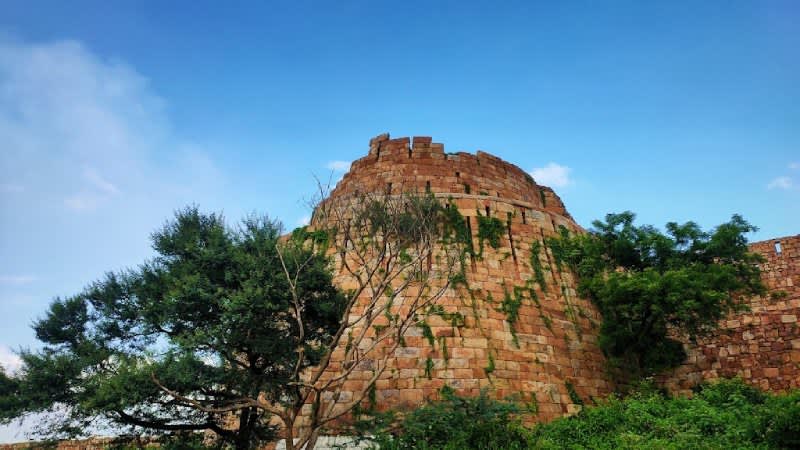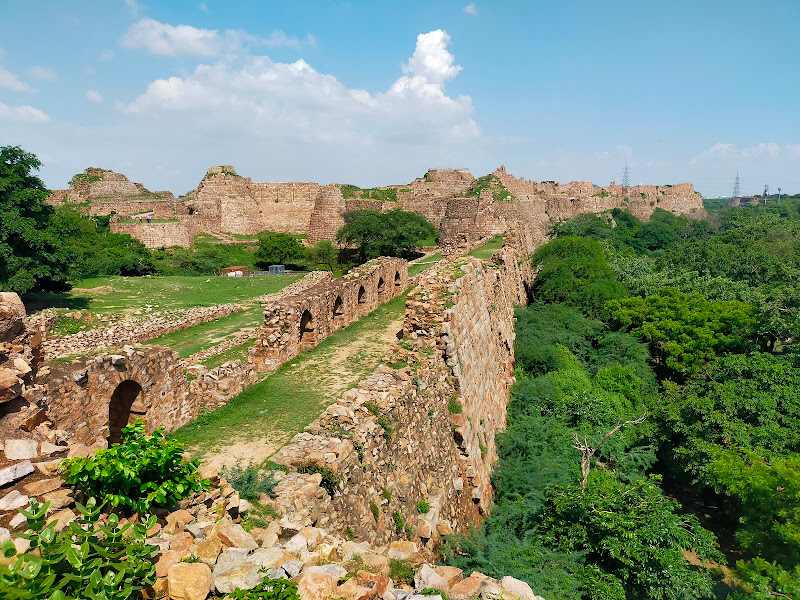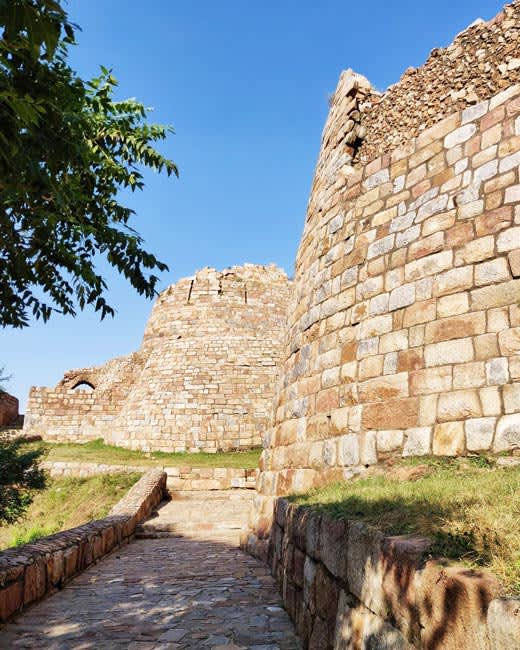 Delhi
DelhiTughlaqabad Fort Is A Monument That Stands Witness To An Ancient Curse
Are you ready for a ghostly tale that’ll send shivers down your spine? Picture this: a ruined monument, steeped in ancient curses, standing tall in Delhi’s southern quarter. Imagine cruising down a wide, smooth road with greenery on both sides. The road slopes up and swings around, making every drive feel like an adventure and every motorcycle ride a thrill. Alongside this enchanting road, you’ll spot a crumbling yet grand fort, silently witnessing changes its builders never dreamed of.
Welcome to the Tughlaqabad Fort! Built in 1321 by Ghiyasuddin Tughlaq, the first ruler of Delhi’s Tughlaq Dynasty, this impressive edifice was once the heart of Tughlaqabad city. Today, it’s a fascinating part of the national capital, holding stories of the past and whispers of ancient curses. Buckle up as we dive into the eerie allure of Tughlaqabad!
As The Story Goes

Picture Credits: Rupam Das
Legend has it that Tughlaq wanted a powerful fortress capable of withstanding a Mongol assault. Assiduously desiring the completion of the fort, the Sultan ordered that all the labourers in Delhi be assigned to the fort. This drew the ire of the Sufi saint, Hazrat Nizamuddin Auliya, who found work on his baoli interrupted. In a confrontation with the ruler, the Sufi saint is believed to have cursed the royal fort, saying, “May the fort remain unoccupied, or else may herdsmen live here.”
The massive, magnificent ruins of the fort stand as a sentinel to Tughlaqabad to this day, but true to the words of the curse, it is a desolate haunt, albeit a great grandeur.
Luck Still Evades All

Picture Credits: Rupam Das
Ghiyasuddin Tughlaq wasn’t too lucky either. Like many kings before & after his time, he had an ambitious son who was in quite a hurry to ascend the throne and doff a crown. En route to Delhi after a successful campaign in Bengal, Ghiyasuddin Tughlaq met his son Muhammad-bin-Tughlaq at Kara in Uttar Pradesh (UP). The year was 1324. On his son’s orders, apparently, a Shamiana (tent used for parties) fell on the Sultan & he was crushed beneath the tent-poles.
Ghiyasuddin Tughlaq’s tomb stands near the fort, an elegant building in red sandstone & white marble, bearing the customary calligraphic inscriptions on its walls that have withstood the test of time.
Worth A Visit

Picture Credits: YangYi JianJianLai
The haunted stories apart, the place is a great one to visit, certainly a brilliant one to ride or drive through. The lush jungle, while dry & scaly in the summers, becomes beautiful after the rains & is home to as diverse a range of flora & fauna as you are unlikely to find inside a city.
How To Get There

Picture Credits: antagraphs
It’s located on the Mehrauli-Badarpur Road & the nearest metro station is Tughlaqabad on the Violet Line after which public transport can be taken to reach the fort.
The Asola Wildlife Sanctuary lies close by & don’t miss out on a great picnic here!
Where | Tughlaqabad Fort - In Tughlakabad
Like
Bookmark
Share

